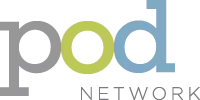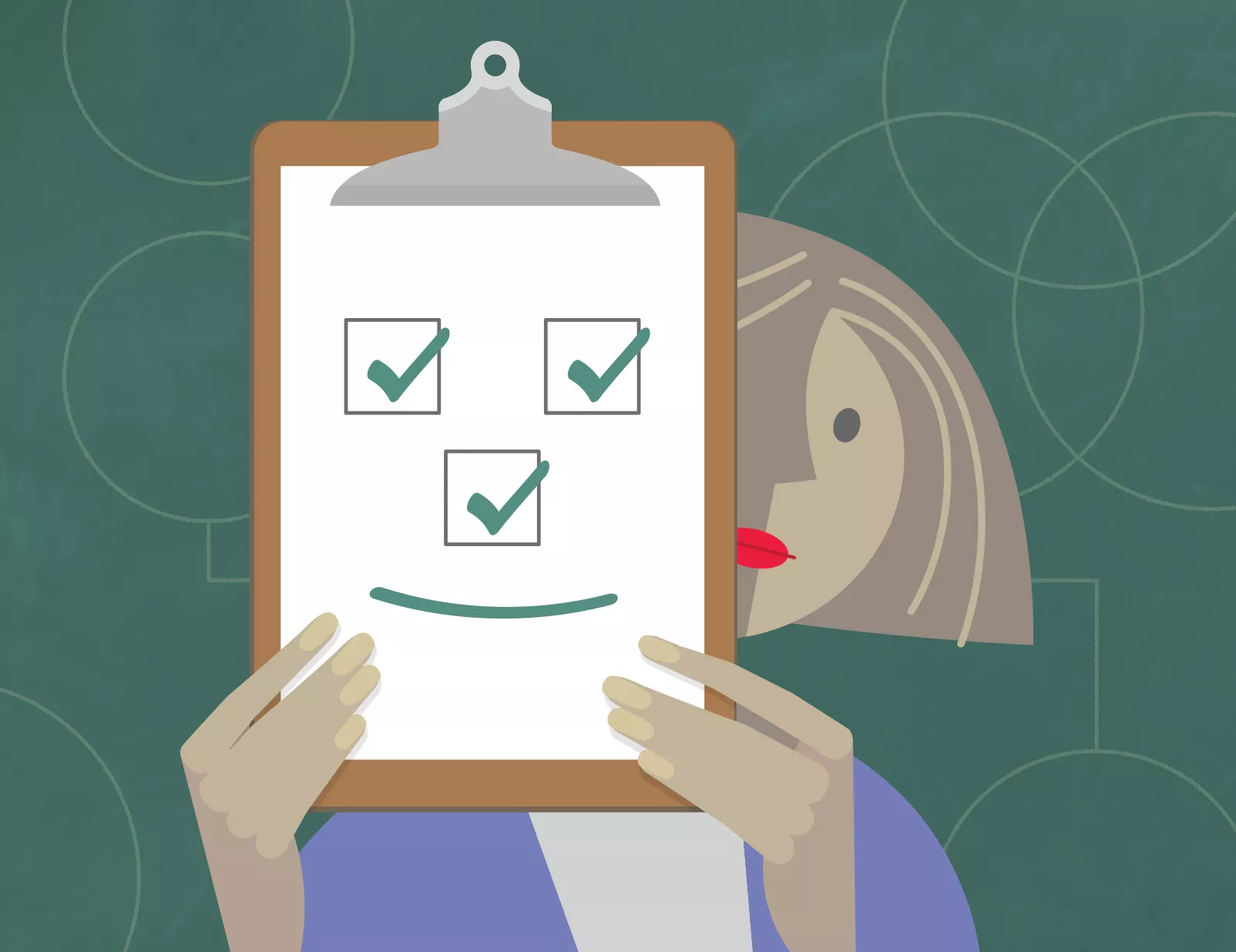Lauren Barbeau and Claudia Cornejo Happel are the authors of Critical Teaching Behaviors: Defining, Documenting, and Discussing Good Teaching, now available from Stylus.

Thriving in Academe is a joint project of NEA and the Professional and Organizational Development Network in Higher Education (www.podnetwork.org). For more information, contact the editor, Molly Mann ([email protected]) at St. Francis College or Mary Ellen Flannery ([email protected]) at NEA.
Good teaching is notoriously difficult to define, in part because of its individualized, context-dependent nature. In our time-crunched world, the need to demonstrate, discuss, or evaluate teaching effectiveness efficiently makes checklist-based instruments appealing. Their simplicity offers a reduced-hassle experience, resting on the comforting idea that we can know someone is a good teacher because they check all or most of the boxes on an established list.
If you have ever served on a committee tasked with creating or selecting such a list, you may already know the checklist’s simplicity to be deceptive. In attempting to be comprehensive, they may grow to unwieldy lengths; in attempting to be manageable, they may become exclusive or biased toward a particular model of teaching. Instruments geared toward particular fields of study may offer a middle ground, but then they fall short of providing a shared understanding of good teaching across disciplines. Higher education needs this shared foundation of what constitutes good teaching if we are to foster productive conversations that increase equity in evaluations, collaboration between colleagues, and ultimately student success. Such conversations move us away from punishing mistakes or the absence of “right" teaching behaviors toward learning from mistakes and rewarding faculty expertise in choosing instructional methods that best fit their courses.
Instead of prescriptions, the Critical Teaching Behaviors (CTB) framework offers research-based guidance to identify effective teaching practices while flexibly accommodating variety and individuality in their implementation. The CTB consists of six defined categories of instructional behaviors that, according to research, lead to improvements in student learning. Each category includes a range of specific example strategies and suggests materials instructors can use to document their implementation of effective teaching practices. Rather than a checklist requiring “good” teachers to check off behaviors, the CTB’s categories summarize the broader principles that inform effective teaching practices. The best instructors use their expertise to select appropriate behaviors across all categories, demonstrating the foundational principles that underlie their approach to teaching.
In this article, we provide an overview of the CTB categories by sharing category definitions, select supporting research, and example behaviors.
1: Align
|
Instructors who align components of learning experiences start with clear learning goals. Measurable outcomes, teaching and learning activities, assessment tasks, and feedback build on each other to support student progress towards these goals. By ensuring that learning experiences are aligned, instructors increase student motivation and success (higher grades and retention) while reducing student frustrations (Rossnagel et al, 2020). Clearly articulated learning goals serve as a foundation for alignment and ensure students and instructors move toward the same destination. In a well aligned course, instructors communicate these goals to students and use them to inform all components of the course. This allows instructors to purposely select activities that facilitate student learning by providing appropriate practice that scaffolds them toward the achievement of learning goals |
What does aligned teaching look like?
- Connecting course outcomes to program, department, and/or institutional outcomes;
- Emphasizing connections across lessons, learning units, and courses;
- Defining and communicating outcomes for learning units and assignments;
- Aligning content, assessments, and activities with outcomes;
- Presenting content and activities at multiple, appropriate levels of engagement and challenge.
2: Include
|
Instructors who create an inclusive learning environment promote equity by using accessibility standards and learner-centered strategies when designing and delivering content. They cultivate an atmosphere in which students see themselves positively represented and experience a sense of belonging conducive to emotional well-being for learning. |
In the U. S., students belonging to minoritized groups have significantly lower rates of retention and graduation (Espinosa et al., 2019). By prioritizing inclusive teaching practices, instructors work towards equitably supporting all students and creating opportunities for success and belonging. Creating truly inclusive and equitable learning experiences can feel overwhelming because of the range of strategies encompassed by this behavior. However, small changes can have big impacts on student success and belonging.
What does inclusive teaching look like?
- Building community and trust with and between students;
- Discussing pathways to success and available resources;
- Prioritizing and learner engagement and feedback;
- Integrating diverse voices, perspectives and experiences;
- Assessing personal biases.
3: Engage
|
Instructors who engage students purposefully select research-based techniques to ensure that students actively participate in the learning process and take responsibility for their intellectual development. |
Engaging students as active participants in their own learning promotes deeper learning and is positively related to student motivation, persistence, retention, and success (Cho & Cho, 2014; Pike & Kuh, 2005).
Engagement is a two-way street: students must choose to engage, but instructors can foster cognitive, behavioral, and emotional engagement through clear communication and well-planned activities.
What does engaging teaching look like?
- Communicating regularly, openly, and transparently;
- Assigning activities that promote engagement with content, peers, and the instructor;
- Varying instructional methods (e.g., interactive lectures, discussion, small group work, etc.);
- Fostering self-regulated learning and student agency;
- Relating course content to relevant practical examples and current disciplinary research.
4: Assess
|
Instructors who assess learning develop and facilitate transparent, meaningful tasks to provide students with timely feedback, and to measure achievement of learning outcomes. They frequently review data to improve instruction. |
Effective assessment supports student learning by providing opportunities to self-assess, see progress, and receive feedback that helps students adjust their use of information and skills learned (Fletcher, 2016; Hortigüela Alcalá et al., 2019). In addition to traditional, high-stakes assessments, such as midterm exams or final projects, low-stakes assignments (e.g., quizzes, drafts, discussions etc.) can serve as checkpoints along the way, providing faculty and students with timely insights into student progress and highlighting concepts or skills that require more practice.
What does assessment look like?
- Communicating assignment purpose, task, and evaluation criteria transparently (TiLT Higher Ed);
- Developing low-stakes assessments and scaffolded projects to support learning;
- Providing timely and actionable feedback on student work;
- Using insights from assessment to inform instructional practices.
5: Integrate Technology
|
Instructors who integrate technology responsibly use tools to design accessible, high-quality instructional materials and engaging learning opportunities beyond traditional barriers of place and time. |
Today most, if not all, teaching and learning in higher education involves technology (OECD, 2015; Office of Educational Technology, 2017). Effective use of technology prepares students for success in and beyond academia by increasing access to learning, fostering student engagement, and promoting critical thinking (OECD, 2015; Robinson and Hullinger, 2008).
What does teaching with technology look like?
- Selecting limited technologies immediately relevant to learning goals
- Leveraging technology to increase access and optimize the student learning experience while keeping in mind the unique challenges and opportunities associated with different instructional modality (e.g., online, hybrid, on-campus)
- Training students to use instructional technology selected
6: Reflect
|
Instructors who reflect gather feedback on their teaching from self-assessment, peers, and students to regularly identify opportunities for growth. They pursue improvements to their instruction through engagement with professional development and scholarship. |
|
| Reflection allows us to transform experience into learning, which makes it an essential skill for students as well as teachers who want to improve their practice (McAlpine & Weston, 2000). Effective reflection requires vulnerability, trust, and a willingness to seek external perspectives on our teaching. We must be open to seeing our biases and shortcomings and choose to learn from them (Jay, 2003). |
What does reflective teaching look like?
- Inviting feedback on teaching from colleagues and students;
- Engaging with scholarship and professional development related to teaching;
- Planning for personal growth by identifying categories for development and setting goals;
- Assessing personal growth ;
- Conducting research on teaching and learning.
Conclusion
We hope that, by offering this research-based understanding of foundational behaviors that underlie effective teaching, we can help shift the conversation away from prescriptive checklists and toward a shared understanding of good teaching that offers instructors both freedom to choose and flexibility to innovate behaviors that improve student learning outcomes.
Now that you know the six CTB categories, where do you see these principles in practice in your own teaching? What actions do they motivate you to take when designing and delivering your courses? How can they guide discussions around good teaching with colleagues?
References
Barbeau, L., & Cornejo Happel, C. (forthcoming April 2023). Critical Teaching Behaviors: Defining, Documenting, and Discussing Good Teaching. Stylus Publishing.
Cho, M.-H., & Cho, Y. (2014). Instructor scaffolding for interaction and students’ academic engagement in online learning: Mediating role of perceived online class goal structures. The Internet and Higher Education, 21, 25–30. https://doi.org/10.1016/j.iheduc.2013.10.008
Espinosa, L. L., Turk, J. M., Taylor, M., & Chessman, H. M. (2019). Race and ethnicity in higher education: A status report. American Council on Education. https://1xfsu31b52d33idlp13twtos-wpengine.netdna-ssl.com/wp-content/uploads/2019/02/Race-and-Ethnicity-in-Higher-Education.pdf
Fletcher, A. K. (2016). Exceeding expectations: Scaffolding agentic engagement through assessment as learning. Educational Research, 58(4), 400–419. https://doi.org/10.1080/00131881.2016.1235909
Hortigüela Alcalá, D., Palacios Picos, A., & López Pastor, V. (2019). The impact of formative and shared or co-assessment on the acquisition of transversal competences in higher education. Assessment & Evaluation in Higher Education, 44(6), 933–945. https://doi.org/10.1080/02602938.2018.1530341
Jay, J. K. (2003). Quality teaching: Reflection at the heart of practice. Scarecrow.
McAlpine, L. & Weston, C. (2000). Reflection: Issues related to improving professors’ teaching and students’ learning. Instructional Science, 28(5), 363-385.
OECD (2015), Students, Computers and Learning: Making the Connection, PISA, OECD Publishing, Paris, https://doi.org/10.1787/9789264239555-en.
Office of Educational Technology. (2017). Reimagining the Role of Technology in Higher Education. A Supplement to the National Education Technology Plan. Washington, D.C.: U.S. Department of Education
Pike, G. R., & Kuh, G. D. (2005). A Typology of Student Engagement for American Colleges and Universities. Research in Higher Education, 46(2), 185–209. https://doi-org.ezproxy.libproxy.db.erau.edu/10.1007/s11162-004-1599-0
Robinson, C.C.; & Hullinger, H. (2008) New Benchmarks in Higher Education: Student Engagement in Online Learning, Journal of Education for Business, 84:2, 101-109, DOI: 10.3200/JOEB.84.2.101-109
Rossnagel, C.S.; Fitzallen, N.; & Baido, K.L. (2020). Constructive alignment and the learning experience: relationships with student motivation and perceived learning demands. Higher Education Research and Development. doi: 10.1080/07294360.2020.1787956
TILT Higher Ed. (n.d.). Retrieved February 20, 2022, from https://tilthighered.com/

